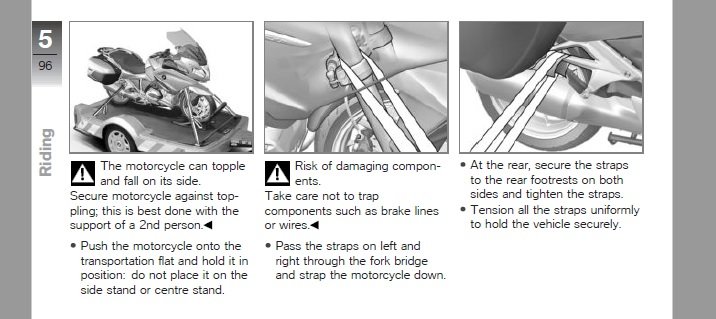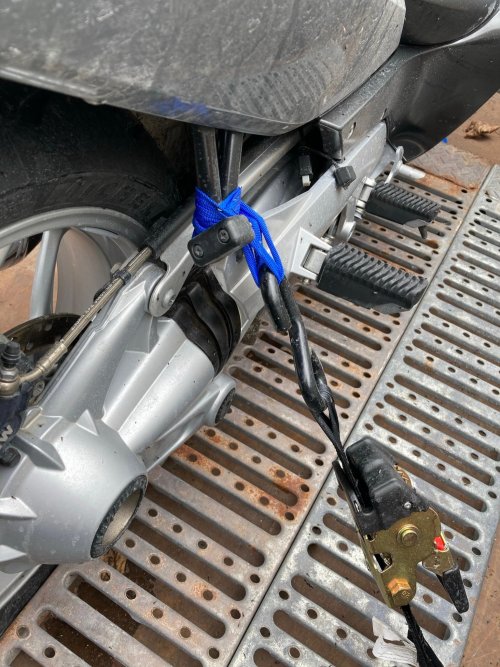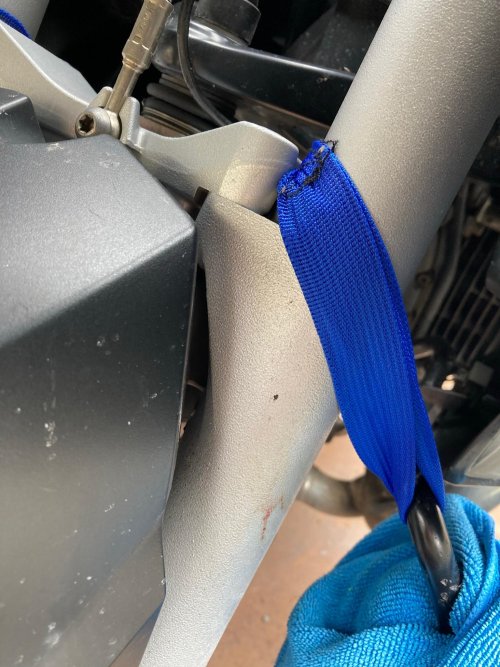Navigation
Install the app
How to install the app on iOS
Follow along with the video below to see how to install our site as a web app on your home screen.
Note: This feature may not be available in some browsers.
More options
-
Welcome, Guest! We hope you enjoy the excellent technical knowledge, event information and discussions that the BMW MOA forum provides. Some forum content will be hidden from you if you remain logged out. If you want to view all content, please click the 'Log in' button above and enter your BMW MOA username and password. If you are not an MOA member, why not take the time to join the club, so you can enjoy posting on the forum, the BMW Owners News magazine, and all of the discounts and benefits the BMW MOA offers?
-
Beginning April 1st, and running through April 30th, there is a new 2024 BMW MOA Election discussion area within The Club section of the forum. Within this forum area is also a sticky post that provides the ground rules for participating in the Election forum area. Also, the candidates statements are provided. Please read before joining the conversation, because the rules are very specific to maintain civility.
The Election forum is here: Election Forum
You are using an out of date browser. It may not display this or other websites correctly.
You should upgrade or use an alternative browser.
You should upgrade or use an alternative browser.
Tie down/anchor points
- Thread starter TheModel
- Start date
tsconver
Hooligan
This is from my manual
Secure the motorcycle for transportation. Make sure that all components that might come into contact with straps used to secure the motorcycle are adequately protected against scratching. Use adhesive tape or soft cloths, for example, for this purpose. The motorcycle can topple and fall on its side. Make sure that the motorcycle cannot topple sideways. Push the motorcycle onto the transportation flat and hold it in position: do not place it on the side stand or center stand. Take care not to trap components such as brake lines or wires. At the front, secure the straps to the top fork bridge on both sides. Pass the straps through the leading link and tighten the straps. At the rear, secure the straps to the rear footrests on both sides and tighten the straps. Tighten all the straps uniformly, the motorcycle's suspension should be compressed as tightly as possible front and rear.
The method in the video looks wrong, not sure how the attachment at the front compresses the suspension any.
Secure the motorcycle for transportation. Make sure that all components that might come into contact with straps used to secure the motorcycle are adequately protected against scratching. Use adhesive tape or soft cloths, for example, for this purpose. The motorcycle can topple and fall on its side. Make sure that the motorcycle cannot topple sideways. Push the motorcycle onto the transportation flat and hold it in position: do not place it on the side stand or center stand. Take care not to trap components such as brake lines or wires. At the front, secure the straps to the top fork bridge on both sides. Pass the straps through the leading link and tighten the straps. At the rear, secure the straps to the rear footrests on both sides and tighten the straps. Tighten all the straps uniformly, the motorcycle's suspension should be compressed as tightly as possible front and rear.
The method in the video looks wrong, not sure how the attachment at the front compresses the suspension any.
The method in the video looks wrong, not sure how the attachment at the front compresses the suspension any.
The Teleleaver suspension is a little different that traditional forks - this is from the rider's manual (which you can download for free from BMW here: https://www.bmw-motorrad.com/en/service/manuals/rider-manual.html)

With my R1100RT, I place the front straps as shown in the video. However, rather than one pair of straps, I use two pairs, each to different tie down points. I do this just in case one strap should fail. In such an unfortunate scenario, the bike will still remain stable. The forks do not need to be compressed as the wheel is secured and the bike suspension is free to allow up and down movement.
The fork tie down method above is not used for my K100 which does not have telelever forks, I run the two pairs of straps from the upper fork brace to the tie down positions on the trailer.
With both bikes, for the rear, the straps are attached to parts of the frame.
I prefer to have a second person assist me to walk the bike onto the trailer. However, on occasion when no one is available, with the trailer hooked up to my vehicle, and using a very wide ramp, I will slowly ride the bike onto the trailer into the self locking wheel chock, permitting me to dismount with the bike vertical. All the straps are previously in place on the trailer tie down points and are ready for connecting quickly to the bike. I also have a painted line on the trailer leading to the chock which can be seen when looking down through the bodywork and forks as I approach the chock, which removes the guesswork of the exact position where the front wheel needs to be.
Since I always park one motorcycle on my bike lift and both trailer and lift are only 8" off the ground, riding the bike onto the trailer is not difficult for me but your results may differ, especially if your trailer's floor has a substantial height off the ground.
The fork tie down method above is not used for my K100 which does not have telelever forks, I run the two pairs of straps from the upper fork brace to the tie down positions on the trailer.
With both bikes, for the rear, the straps are attached to parts of the frame.
I prefer to have a second person assist me to walk the bike onto the trailer. However, on occasion when no one is available, with the trailer hooked up to my vehicle, and using a very wide ramp, I will slowly ride the bike onto the trailer into the self locking wheel chock, permitting me to dismount with the bike vertical. All the straps are previously in place on the trailer tie down points and are ready for connecting quickly to the bike. I also have a painted line on the trailer leading to the chock which can be seen when looking down through the bodywork and forks as I approach the chock, which removes the guesswork of the exact position where the front wheel needs to be.
Since I always park one motorcycle on my bike lift and both trailer and lift are only 8" off the ground, riding the bike onto the trailer is not difficult for me but your results may differ, especially if your trailer's floor has a substantial height off the ground.
tsconver
Hooligan
The Teleleaver suspension is a little different that traditional forks - this is from the rider's manual (which you can download for free from BMW here: https://www.bmw-motorrad.com/en/service/manuals/rider-manual.html)
View attachment 83127
My manual says to use the top fork bridge. I think the front suspension is the same on an 05 and a 2011. I still don't see how attaching to the lower fork bridge can compress the suspension when the spring is above the mount point.
I hauled my 2018 RT 1500 miles using a wheel chock and ties at the fork bridge so the front suspension was not compressed, plus a couple ties at the rear to stabilize the back end tied through the wheel. No issues at all. You really don't need to compress the suspension depending on where you tie too.
If you tie higher up so the ties pull the suspension down then you need to make sure you compress the suspension.
If you tie higher up so the ties pull the suspension down then you need to make sure you compress the suspension.
Mission accomplished
Pretty much followed advice given here.
Tied down at the front fork brace, didn’t compress suspension but the front end rode the bumps like I was riding it.
On the rear, I tied down on the subframe just above rear foot rest.
All solid and worked like a charm.
Thanks for all advice given
Pretty much followed advice given here.
Tied down at the front fork brace, didn’t compress suspension but the front end rode the bumps like I was riding it.
On the rear, I tied down on the subframe just above rear foot rest.
All solid and worked like a charm.
Thanks for all advice given
Attachments
Similar threads
- Replies
- 2
- Views
- 2K
- Replies
- 2
- Views
- 910

 .
.

